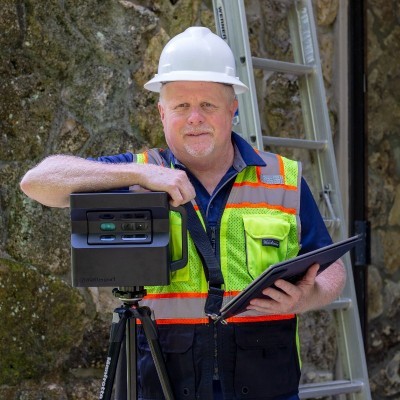Mosaic Camera Case Study: How to Get Street-Level Imagery Live Overnight18270
Pages:
1
 WGAN Forum WGAN ForumFounder & WGAN-TV Podcast Host Atlanta, Georgia |
DanSmigrod private msg quote post Address this user | |
 Mosaic 360º mobile mapping camera | Image courtesy of Mosaic  Image courtesy of Mosaic We Get Around Network Member Mike Vorce (@MatterFix) - Founder of MatterFix and Site Tour 360 was recently featured in a Mosaic Case Study: reprinted here with the permission of Mosaic Director of Sales & marketing Lynn Puzzo. --- Mosaic Case study: How to get street-level imagery live overnight 1. Who is Site Tour 360? 2. What was the problem they were facing? -- Stability and usability -- Vendor-locked data -- Power supply 3. What was the mission? 4. What was the solution? -- A powerful, reliable, confidence-building tool -- Freedom to use data as they wished -- Usability, down to the last detail -- A quick and easy workflow 5. What were the results? -- What it means for Site Tour 360 -- What it means for Site Tour 360’s customers 6. Conclusion -- Potential for Site Tour 360 with their Mosaic 51 Florida 360º imagery expert, Site Tour 360 capitalized on their newest 360º mobile mapping camera to get post-disaster surveying images viewable in less than 24 hours “I would estimate our workflow speed increase, about double to quadruple.“ Keep reading to find out how. Who is Site Tour 360? Site Tour 360 is a reality capture and mapping consultancy, specializing in a number of geospatial focused projects including creating custom workflows for capturing and publishing large scale 360 imagery collections. In addition to documenting natural disasters and working with utility companies, Site Tour 360 also works directly with the Google Maps & Google Street View teams to provide rapid updating services to those platforms. Most recently, Site Tour 360 was called upon to document the large-scale destruction brought by Hurricane Ian’s landfall on SW Florida.  Site Tour 360 vehicle with a Mosaic 51 camera ready for street-level data collection in Florida post Hurricane Ian. | Image courtesy of Mosaic It was this last endeavor that this article will focus on today and how Co-Founders of Site Tour 360, Mike Vorce and Dylan Faraone, have developed a powerful workflow for collecting, processing, and delivering the reality of large environments post disasters to their customers. This new workflow has incredibly consequential outcomes, with the potential to assist decision makers within organizations such as FEMA and the National Disaster Preparedness Training Center, better understand and deploy aid to places in need at the moment it is needed. Their solution combines their decades of experience in geospatial, 360º photography, and network surveying along with Mosaic’s original robust and user-friendly 360º mobile mapping camera – the Mosaic 51 – plus post processes that get the street-level from captured to displayed in less time than ever before. What was the problem they were facing? Both Vorce and Faraone commented on several key failures or features lacking in other 360º cameras that they had used. Stability and usability Vorce responded that several of the other most common 360º (mobile mapping) cameras had some “quirkiness” and “wasn’t as dependable” or were “a little clunky to use.”  Mike Vorce, Site Tour 360 President | Image courtesy of Mosaic Vendor-locked data Dylan Faraone remarked that mobile mapping cameras and systems which are vendor-locked, “had been a problem for us and for our business model. We’re not trying to lock our customers into anything.” Power supply Another big source of strain had been the camera’s power source. One of the previous solutions Site Tour 360 had worked with proved to be very problematic when it came to using the suggested power supply options, requiring frequent rebooting or complete failure to power up. Vorce commented that on the other hand, the Mosaic 51 “works flawlessly with the V-mount batteries as suggested.” What was the mission? Originally the grounds for acquiring the Mosaic 51 was to try out the capabilities on a RFP (Request for Proposal) they had gotten from a large utility company and they decided that it was the time to try out a new technology. But as (bad) luck would have it, Hurricane Ian hit Florida, where Site Tour 360 is based, and specifically SWFL (Southwest Florida) where Dylan grew up and has friends and family there, only a week or two after they received their first Mosaic 51 camera. Vox news reported: Hurricane Ian is now the deadliest hurricane in the continental United States since Hurricane Katrina in 2005. It made landfall on September 28 along Florida’s gulf coast at Category 4 strength, with sustained winds of 155 mph driving a storm surge as high as 18 feet, flinging boats and sweeping homes off foundations. With that, the plans and the scope changed and Site Tour 360 got to test out a new workflow on the fly. What was the solution? The Mosaic 51 proved to be a solid piece of equipment which solved many of the issues Faraone and Vorce had encountered with previous tools. When Faraone was how he felt using the Mosaic 51, he responded: "I love it. It’s great. It should be the industry standard. It’s so reliable."  Dylan Faraone, Technical Director at Site Tour 360 | Image courtesy of Mosaic A powerful, reliable, confidence-building tool “The camera is rock solid, as far as reliability goes. We’ve been able to run it all day and the camera will keep running no matter what. After a few days of operations I had full confidence that once I hit that button, that thing was recording and I can’t say that I’ve ever had that level of confidence for any camera that we’ve ever used. And it’s been a great experience.”  Image courtesy of Mosaic Freedom to use data as they wished Vorce explained that they want to give their customer the end product that will be the best for them. Their natural inclination is to stay away from any proprietary software or any subscriptions. “You should be able to use the data and own it outright without additional fees and licensing costs.That was a big draw.” [said] Faraone Usability, down to the last detail  Image courtesy of Mosaic A huge feature for Site Tour 360? The removable media (hot swappable SSD drive), typically 1TB of data storage which comes pre-inserted for each Mosaic camera. The Mosaic 51 and Mosaic X cameras come with a 1TB SSD drive (pre-inserted). | Image courtesy of Mosaic Previous systems in the past required an additional step where you would have to download all of the data before you could use the camera again. This step added significant time to the process. With the ability to remove one SSD and copy that data to a workstation while another one was in use was a huge added benefit to the new Site Tour 360 workflow. Another key component: the power source. “Whoever came up with the idea to power it (the camera) with those V-mount batteries – that was genius. We can run the camera all day, which previously was impossible with other cameras.” [said] Vorce A third important factor which really sealed the deal for Faraone who was working with the Mosaic 51 on a near daily basis at the start of the project was the webUI (user interface) that was accessible within the vehicle by any device (smartphone, tablet or laptop). “The user interface for the camera itself is great, it’s more verbose than the competition. It’s giving you a lot more information about what’s going on with the camera.” [said] Faraone Learn more about how to operate the Mosaic 51 and Mosaic X cameras [on the Moasic website]. Source: Mosaic | 16 December 2022 |
||
| Post 1 • IP flag post | ||
Pages:
1This topic is archived. Start new topic?
















